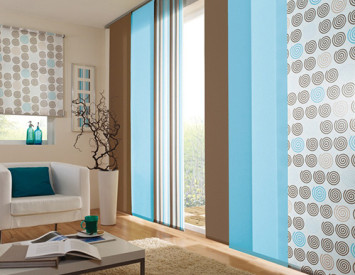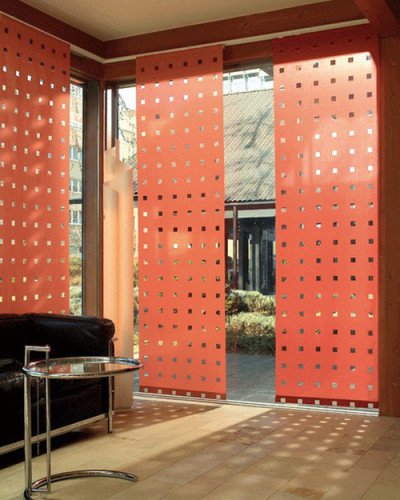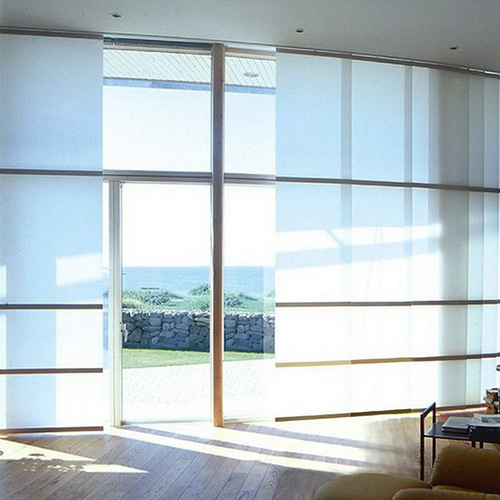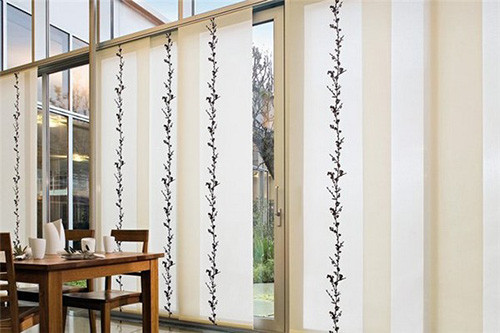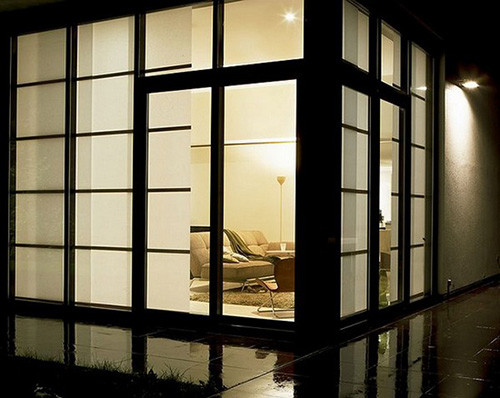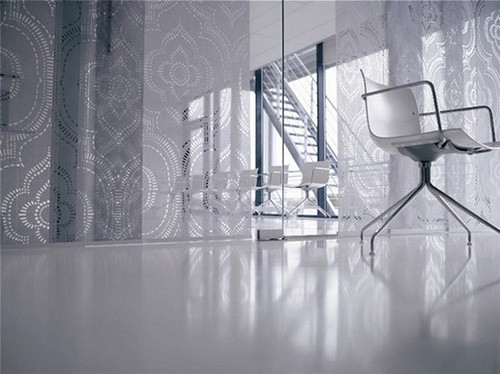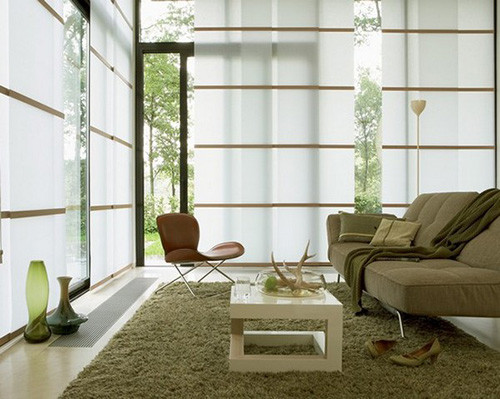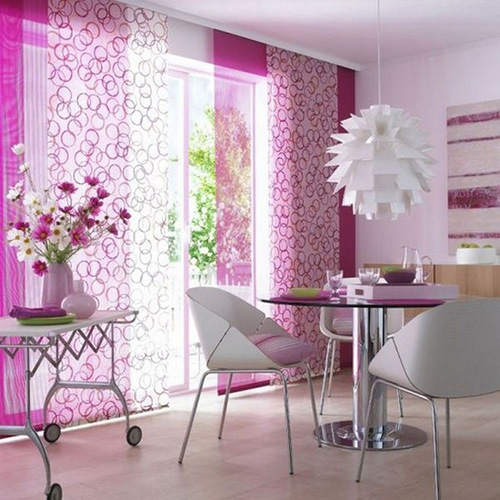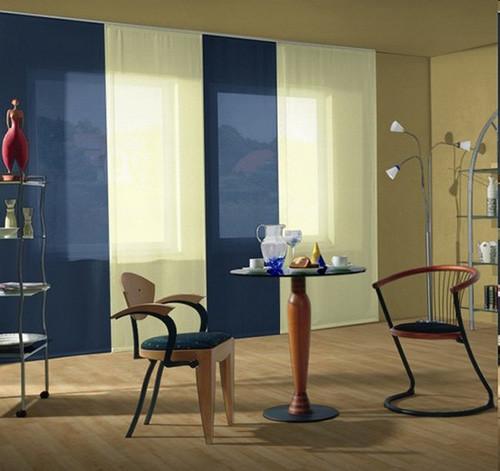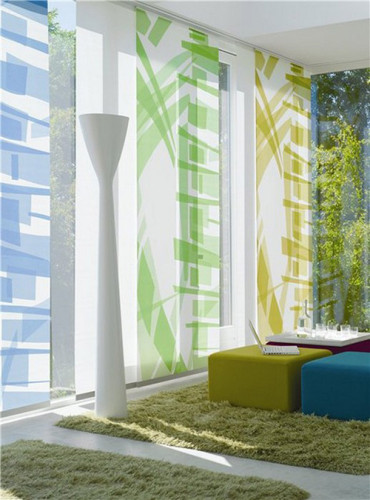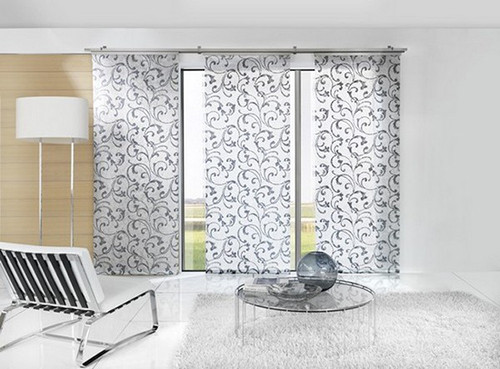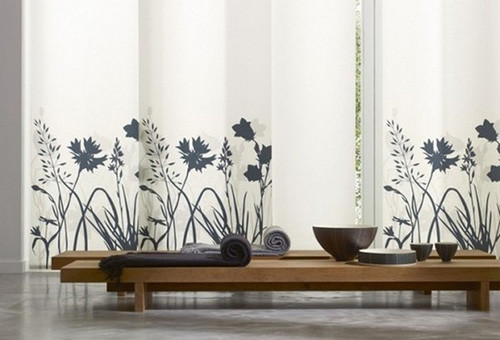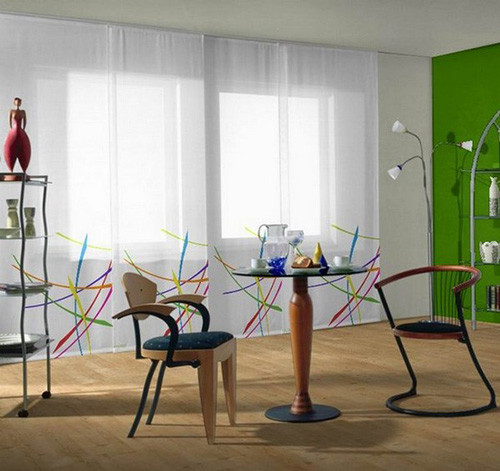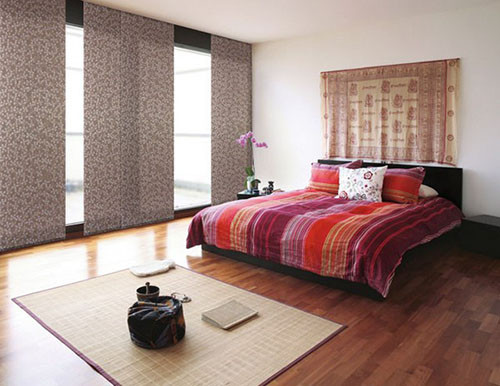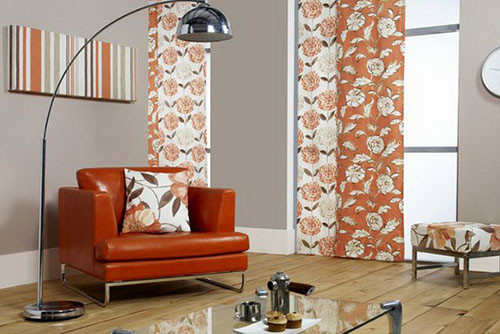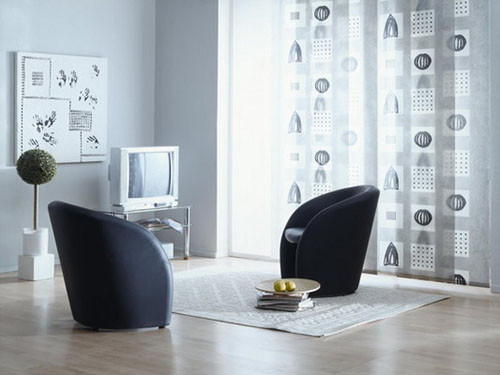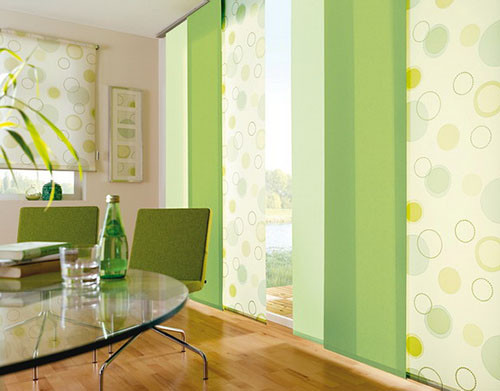The Japanese style in interior design is becoming more popular. The reason for this is the incredible lightness and conciseness of images, the naturalness of textures and harmony with the natural beginning. Current trends in interior design are increasingly reduced to minimalistic and environmentally friendly directions, and the Japanese style successfully combines both. One of the integral attributes of this course is Japanese curtains. These are completely unusual and original interior items, which right now are performing a revolution in their field. Today we will talk about what it is, you look at the photo of Japanese curtains in the interior and learn how to make them with your own hands.
Content
Japanese curtains - what is it
Japanese curtains are completely different from the sections of matter that are familiar to us, falling from the cornices under the ceiling. This is a kind of screen, consisting of a holding element at the top, dense, but light matter and weighting below. Japanese curtains cover the window opening completely, and their principle of action resembles the specifics of the work of vertical blinds - the segments of the structure “hide” one after another in folded form. Curtains consist of several sections, the number of which depends on which size the window you need to close. The difference between Japanese curtains and vertical blinds is that their panels are much wider and made of special materials.
Each of the sections looks in the form of a rectangular cloth made of fabric and can reach a width of up to 100 cm. In the upper part, the canvas is attached to the guide - a special cornice with rails. Fixation is carried out through Velcro, which is very convenient, since at any time you can remove the curtains for washing or change to other, more suitable for the interior. The cornice for Japanese curtains can be both one -row and many -row. The latter are most often installed in the bedrooms, and one row consists of translucent sections, and the second reliably blocks sunlight, giving the eyes to rest.
Another feature of Japanese curtains in the complete absence of assemblies in the upper part, all kinds of clamps, garter, fasteners and all kinds of pickups that they like to cling to classic curtains. This makes the canvases perfectly straight, smooth and clean, which even more liberates the atmosphere and creates a feeling of lightness.
Japanese curtains are closely related to Roman and belong to the category of flat curtains. This means that each canvas should have a rigid tension, so a weighting agent is attached to the lower end of the sections. If the canvas must be washed, the weighting agent is taken out. In some cases, to ensure additional stiffness into the side seams of the paintings, special strips from fiberlass with non -woven gluing are inserted to avoid the appearance of wave -like seams.
It may seem that the perfectly flat surface of the paintings is boring and monotonous, but it gives unlimited freedom of design fantasy. Here, geometric abstractions and floral motifs, traditional painting or gradient from your favorite shades can be depicted here. Artistically designed Japanese curtains in the interior look best on large surfaces, and plain plain and not overloaded with images can visually expand a small room.
The advantages of curtains in the Japanese style:
- it is permissible to use any colors;
- sections of curtains only from natural environmentally friendly fabrics;
- the lack of drapery - the canvases are absolutely even, which creates a feeling of lightness;
- due to the lack of folds on the canvases, dust does not accumulate;
- at any moment the canvas can be removed and washed;
- features of fastening fastening allow you to replace them with curtains of a different color or from other fabric, without dismantling the previous holders;
- japanese curtains can easily be made with your own hands (more on that below);
- the possibility of remote control of the system.
These curtains simply do not have any disadvantages, so many designers seek to use them as often as possible when drawing up their interior projects.
Management of Japanese curtains
Curtains play a large role in interior design. Judge for yourself - the walls occupy a large part of the room, and the other space is allotted to the windows. Closed curtains act as another wall, the only difference is that you can control this wall. Japanese curtains can be opened and closed manually or through mechanics. In the first case, the management process is identical to the treatment of vertical blinds - you need to pull the lace to shift the canvases to the side.
Depending on the type of structure, the curtains can be assembled on the left side, on the right or on both sides of the window. Remote control of the curtains symbolizes technological progress and creates the most comfortable living conditions. Imagine that you forgot to close the curtains for the night, and the early Saturday morning does not want to get up with the first rays of the sun! To fix this, just press the button on the control panel. The principle of operation of distance curtains in the Japanese style is shown in the video below:
All models of Japanese curtains have cornices, and when opening one panel goes beyond the other. With a decrease or increase in the number of cornices, you can independently simulate the original design of curtains for your apartment. The uniqueness of such cornices is that they allow you to change the design of the same curtains, introducing diversity to the interior.
Zoning with curtains
The unusual structure and appearance of Japanese curtains pushed the designers to the original solution - to use them not only for windows, but also as partitions. If you look at home in a traditional Japanese style, then you will see, then there are no thick walls, and the entire interior is simplified as much as possible. The Japanese do not have an abundance of shelves with souvenirs, huge wardrobes and sideboards with eternal tea service "for guests". According to traditional views, everything that closes your apartment, in the same way clutching your life. Accordingly, the easier and easier the situation will be, the more free you will feel. Such a short excursion into the psychology of Japanese design is necessary to understand why, instead of walls in houses, light opening partitions are used, and why Japanese curtains are ideal for this role.
With a light straight curtain, you can easily divide the room into two functional zones or, on the contrary, combine into one. This solution is ideal for a studio apartment where the living room is combined with the bedroom. Also, the Japanese curtain as a partition can be used when decorating a room for two teenage children, each of which is vital to have personal space.
Japanese curtains can be replaced by doors in wide openings. They will perfectly fit into any modern interior or “refresh” the previous environment, introducing an exotic touch into it. Zoning of space in this way can be very interesting. For example, if on the one hand the canvas is painted in color corresponding to this half of the room, and the shade on the other side will complement the color palette of the interior of the second half. In general, color accompaniment should be selected very carefully, and before that it would be nice to inform about the psychological context and the influence of each of the colors. For example, it is better to make a bedroom in neutral colors that do not excite the psyche. In the children's room, the curtains can be bright, but if they are located close to the sleeping area, it is recommended to choose something more calmly, otherwise the child will be capricious.
If you divide the room into two unequal parts, one of which is significantly smaller than the other, for example, it is a desktop with a table and a bookcase, choose the canvases of light shades. In this case, the smaller part will not seem too close. As for the transparency of the paintings, they can be translucent and opaque. The former give the room airiness, but the latter clearly follow their purpose - replace the wall.
DIY Japanese curtains
As we have already said, one of the advantages of Japanese curtains is the fact that they can easily be done independently, even without professional skills. But before refueling a sewing machine, you need to figure out which fabric for Japanese curtains can be used. Here you should be guided by one simple rule - the more natural, the better. The canvases can be very different: transparent and light, dense and light -resistant, translucent, etc. It all depends on what effect you want to achieve.
The color of the fabric must be selected based on the general "mood" of the interior. Curtains can balance it, unite various details, light canvases will “unload” too dark atmosphere, and a bright pattern can revive a plain design.
Useful advice: If you want to create a Japanese curtain with the image, choose a not too wide drawing so that it is entirely fit on the panel.
As for the material itself, for sewing Japanese curtains, you can use linen, cotton, natural silk, straw or harvest (mixture of cotton with polyester). A combination of several types of fabrics and other natural materials, for example, bamboo sticks, is also permissible. Bamboo is one of the most popular materials for creating an interior in the Japanese style. Curtains consisting of light and heavy canvases look very interesting.
Experts recommend using dry and hard fabrics for sewing Japanese curtains that do not stretch, and at the same time preserve natural shades. However, in the store of Japanese curtains you can find a lot of models made of synthetic materials of a variety of colors. What to use is solved only to you, but always remember that it is better for home to choose only environmentally friendly interior items.
How to make canvases for Japanese curtains:
- You should start sewing Japanese curtains with cutting panels. Measure the window width or opening if you are going to use the curtain as a partition.
- Divide the resulting value by 60 cm (standard panel width) to find out how many panels you need to close the opening. For example, if the width is 3 m (300 cm), then it will need 5 panels of 60 cm. However, it should be borne in mind that this calculation option is suitable for curtains in which the panels are located on the end. If you want the panels evenly overlapping each other, you will need to add another thing.
- Measure the length from the floor to the ceiling and add 10 cm to the resulting value, which will go to the allowance and processing of the edges.
- Multiple the length by the number of paintings for the required width to find out how much fabric you need to buy. In the event that the width of the fabric is twice the width of the panel, reduce the desired length of the half so as not to buy excess fabric.
- After cutting the paintings in accordance with the dimensions, carefully process the side sides, the lower and upper part of the parts.
- Drink each panel with an iron.
- Unfortunately, it will not work to make a cornice and other elements of Japanese curtains with your own hands, so you need to buy them in a specialized store. When buying accessories, note that on the upper bar, which must be attached to the cornice, there is already Velcro.
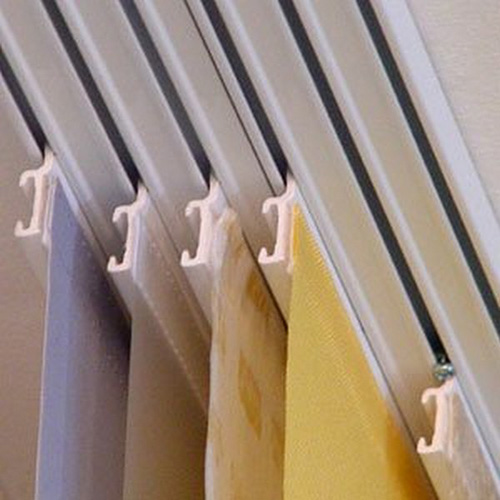
- To the lower part of each fabric strip, sew the weighting agents, which also need to be purchased separately.
- It remains only to install the cornice and hang the canvases.
Japanese curtains-panels do not need special care. To do this, it is enough to wash them from time to time in delicate mode or vacuum them without removing. When washing, take into account the characteristics of the material from which the curtains are made.
Useful advice: In order not to iron the canvases each time, wash the curtains, squeeze well and hang in place slightly wet - they will straighten under your own weight, and you will save a lot of time.
For curtains made of bamboo or rattan, a vacuum cleaner will be enough, and plastic panels can simply be wiped with a damp cloth with a liquid for washing windows without alcohol.
Japanese curtains are becoming more popular, and now you understand why. This is a beautiful, convenient and practical element of the interior, which can become much more than just protection from direct sunlight.
